As with their spring 2017 collection, I suspect LM Ladurée was looking to the past when creating their fall collection this year. (Same with summer 2017 which for some reason I completely forgot to write about!) A lyre is kind of a strange motif and I thought it was the first time it had appeared on makeup, but as usual it has appeared on vintage pieces. Before we get to those I want to take a moment to drool over the details of this truly resplendent highlighter.
Whoops, just realized the compact in this photo is upside down. Sigh.
The box is outfitted in a creamy powder blue color, reminiscent of Wedgwood ceramics, and features some lovely silver embossing.
The compact packaging is a dazzling sparkly silver with the lyre motif in blue and more yummy silver embossing.
Another scrumptious detail awaits on the interior of the palette – an elegant blue wallpaper-like print with musical instruments in white.
And here's the highlighting powder itself. I'm positively enamored with the swans, as they look even more elegant in the powder than in the outer packaging.
I thought a lyre was kind of a weird choice for a highlighter, especially with the addition of the swan. The swan design may have been borrowed from clip art (which I've suspected before with LM Ladurée), but as we'll see, perhaps the company really did get inspiration from the lyres prominent in French Empire-era art and decor, which, in turn, drew on the depiction of the lyre in Greek antiquity.
It's entirely possible that LM Ladurée was referring to the revival of ancient Greek style in post-revolution France. We know Les Merveilleuses imitated the flowing togas seen in ancient Greek sculpture, and both the lyre and the swan are historically associated with the Greek god Apollo as he was the god of music. (In fact, many depictions of lyres in ancient Greek coins and and vases show the lyre arms as swans or other birds). The lyre was particularly popular towards the end of Louis XVI's reign and remained so throughout the Restoration, so roughly from the 1790s-1830s. I found one example that's similar to the swan/lyre motif from the LM Ladurée highlighter as well as some other interesting lyre depictions which may point to the inspiration for the design.
This photo is blur-tacular but you can just about make out the swans on the lyre.
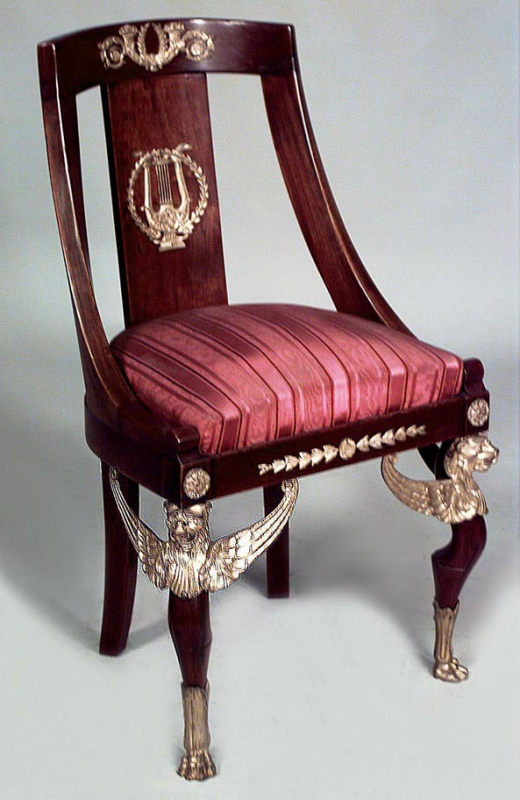 (image from newel.com)
(image from newel.com)
Some Merveilleuses and their ilk were represented playing lyres and sporting the classical Greek revival or Empire style attires popular in their circle.
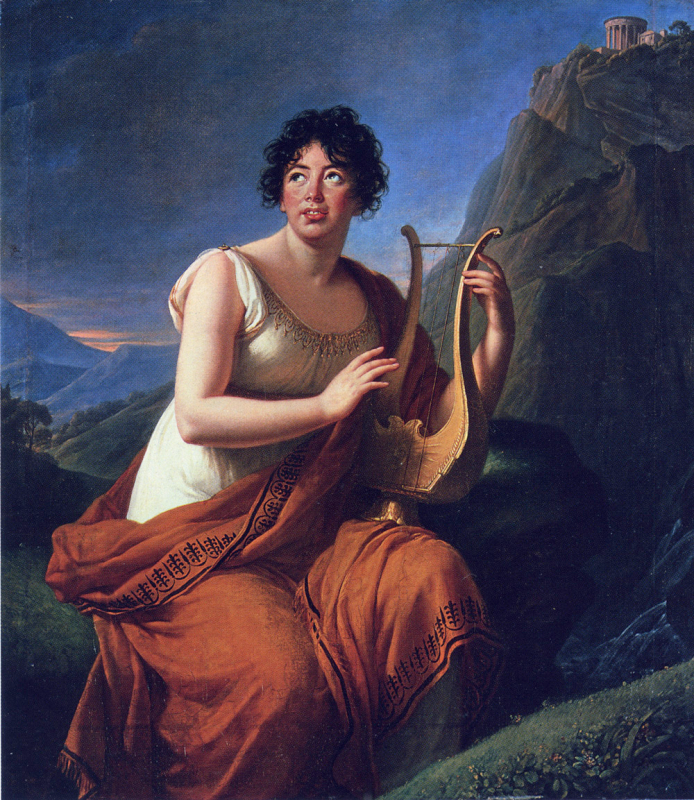 (image from the-athenaeum.org)
(image from the-athenaeum.org)
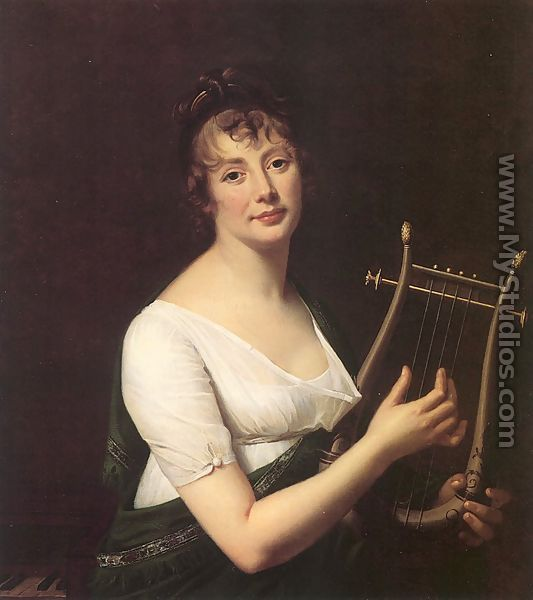 (image from mystudios.com)
(image from mystudios.com)
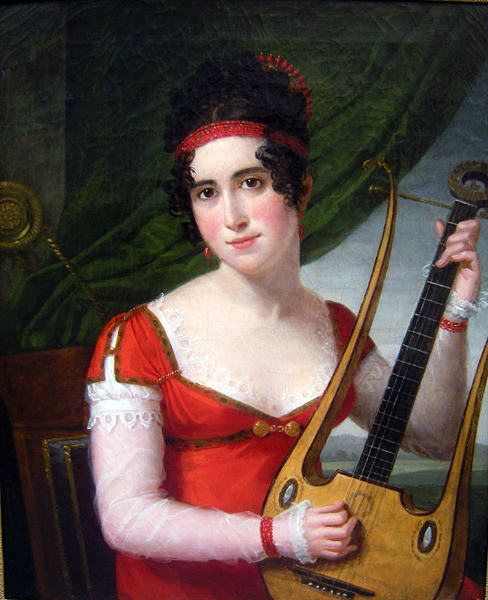
(image from syuminiki.tumblr.com)
If you look closely at the lyre in this 1800 fashion plate, you'll notice a swan – not forming the sides of the lyre but hidden in a cutout at the bottom.
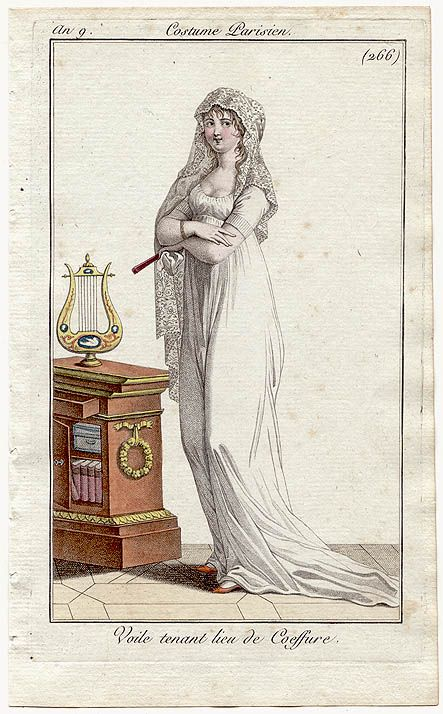
(image from pinterest)
In addition to the examples above, LM Ladurée shared a very interesting photo on their Instagram yesterday. Granted, it was in relation to their holiday collection, but it seems my hunch about them actually looking at French furniture and art might have been correct. This was the photo they posted, a view of the Grand Salon in the apartments of Napoleon III in the Louvre.
Do I spy…lyre-back chairs?! Indeed! I don't think they have swans for arms, but this may have been what LM Ladurée's designers and marketing people were looking at when coming up with this highlighter. Here's another view.
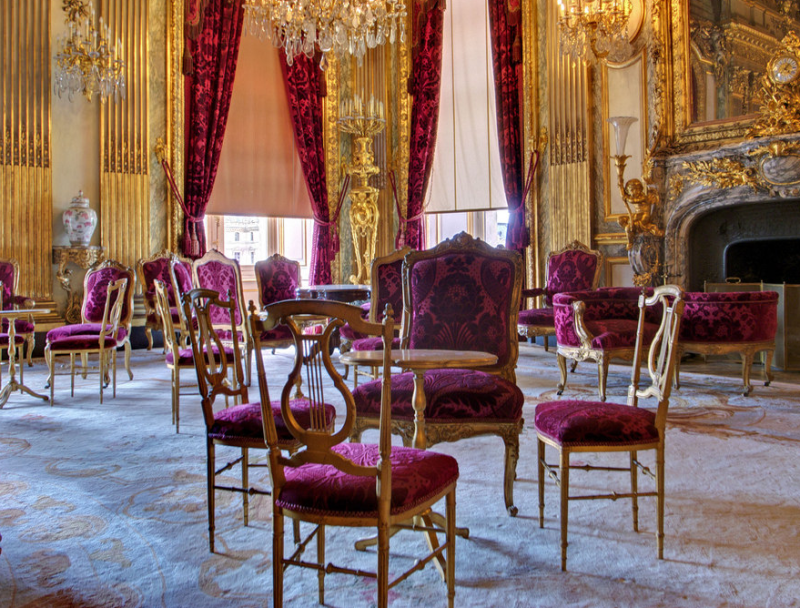 (image from flickr)
(image from flickr)
Napoleon III's reign was considerably later than the time of Les Merveilleuses, so I'm guessing the lyre's popularity stuck around until the end of the 19th century. So while these particular chairs may not be Empire-era, I still find it fascinating that LM Ladurée posted this – it seems more plausible that they were looking at opulent French decor rather than clip art when designing their fall highlighter.
Anyway, the brand's spring 2017 powder box looked so strikingly similar to some vintage Terre de Retz boxes that I just had to poke around to see whether they may have been drawing on any vintage references for the fall collection in addition to post-Revolution French decor and art. Given what we've seen above, I actually don't think LM Ladurée was influenced by vintage items, but it was pretty neat to see that the motif had appeared previously. The earliest makeup packaging to include a lyre symbol came from Harmony of Boston and Leichner. The excellent Collecting Vintage Compacts blog has a very thorough post on the former so I'll direct you there for the full history, but here are some examples of powder boxes from that company.
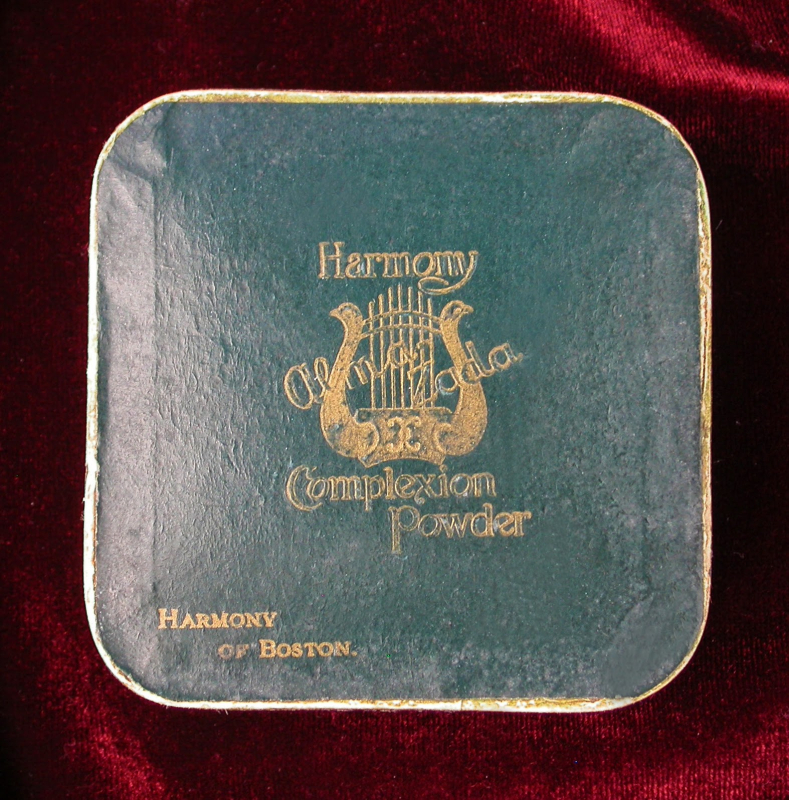 (images from collectingvintagecompacts.blogspot.com)
(images from collectingvintagecompacts.blogspot.com)
I was unable to pull together a full history of Leichner, but the short version is that it was founded in Berlin by Ludwig Leichner in 1873 and focused on stage makeup. But by 1902 Leichner's face powder was being imported to the U.S. for sale to the average woman, i.e., non-actresses who didn't require grease paint, just a subtle dusting of powder. I'm assuming the lyre was a nod to Leichner's profession as an opera singer.
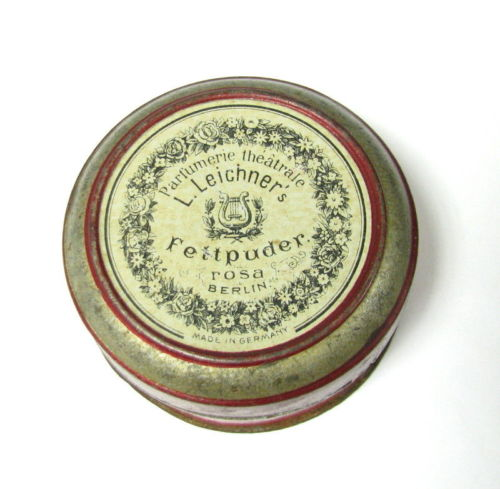
(image from ebay)
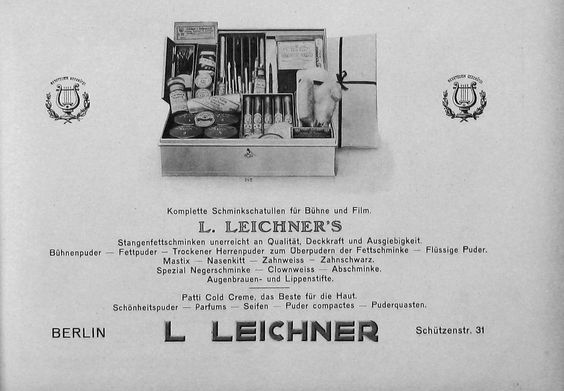 (image from pinterest)
(image from pinterest)
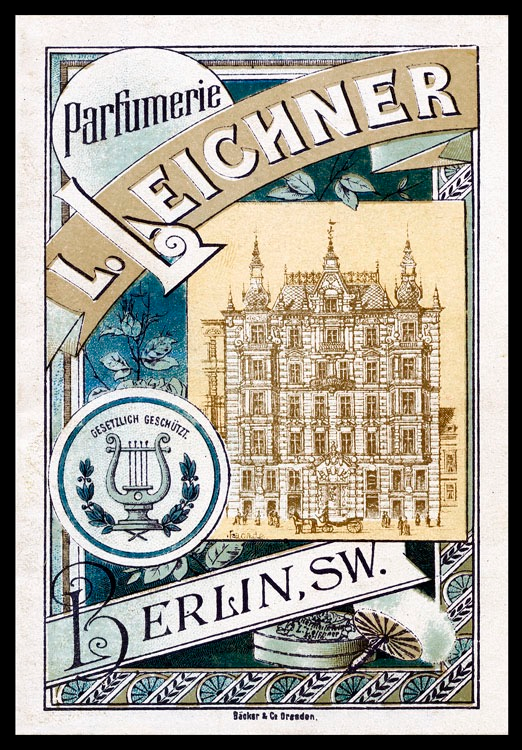 (image from sheaff-ephemera.com)
(image from sheaff-ephemera.com)
I believe this is a slightly later version of the face powder (ca. 1930-40s), but the packaging kept the lyre motif.
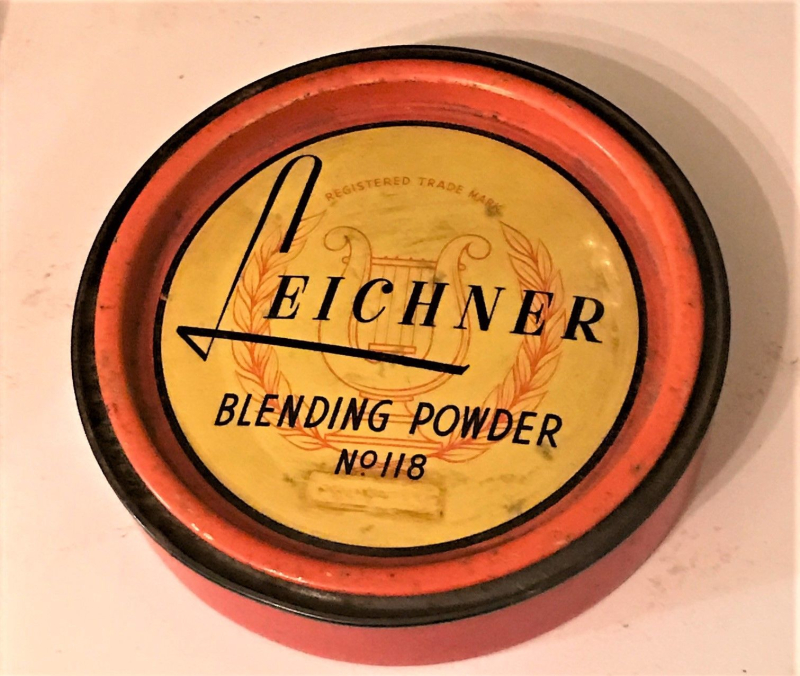 (image from ebay)
(image from ebay)
Now for some compacts, which obviously date a little later than the powder boxes. This Stratton features a beautiful muse playing the lyre with a lush trail of peacock feathers floating behind her.
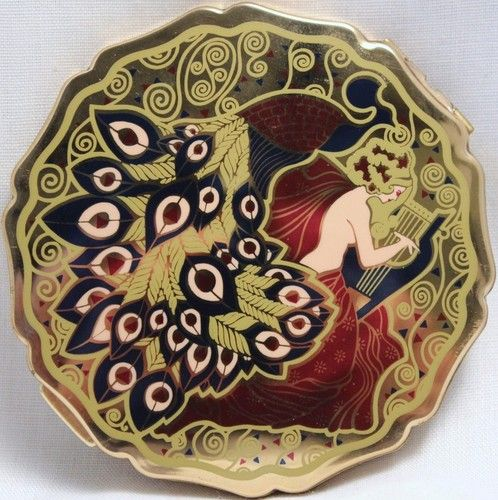
(image from pinterest)
These other compacts all have ties to music, so it's not surprising they made use of a classic music motif. The story behind Volupté's "Pianette" compact by is a little murky and I doubt there's even any truth to it, but it makes for an intriguing marketing campaign.
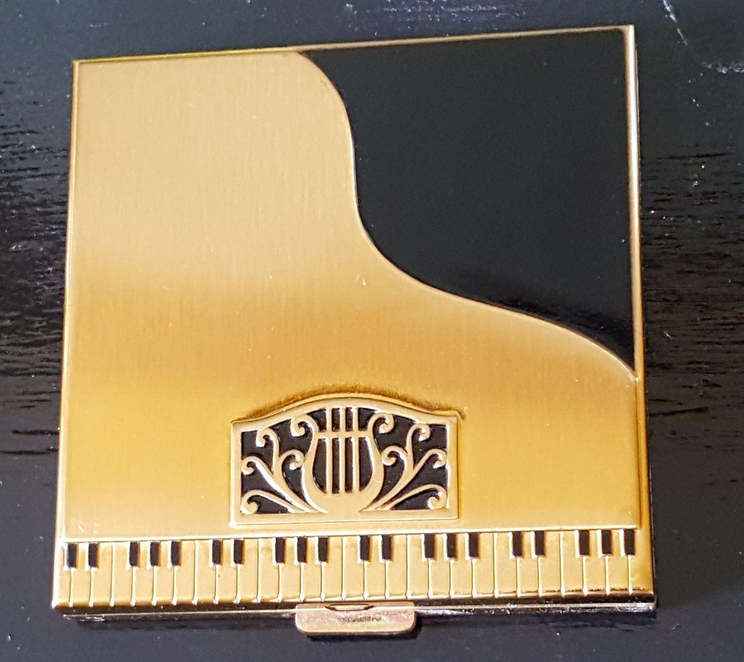 (image from rubylane)
(image from rubylane)
Apparently it was introduced in late 1948 as "a replica of a tiny piano that served as a marriage proposal".
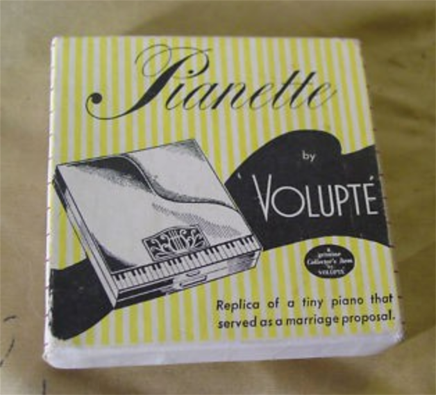
(image from worthpoint.com)
The full story is that the Pianette was inspired by a "hand-carved compact that an admirer presented to a famous European concert pianist at the end of an especially triumphant tour. On the back a marriage proposal was inscribed – which was accepted!" I have no idea if that's true, but it's a pretty good story nonetheless.
Most fittingly, the lyre was used on musical compacts. I love the idea of having a little song play while I touch up my powder. 🙂
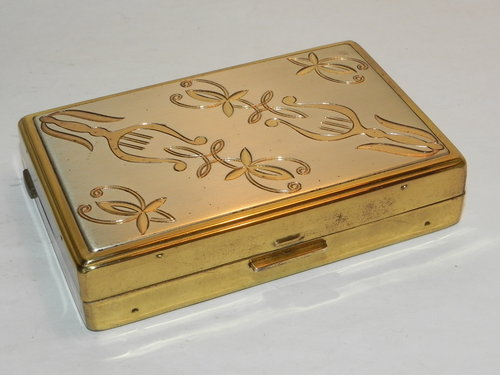
(image from antiquesatlas.com)
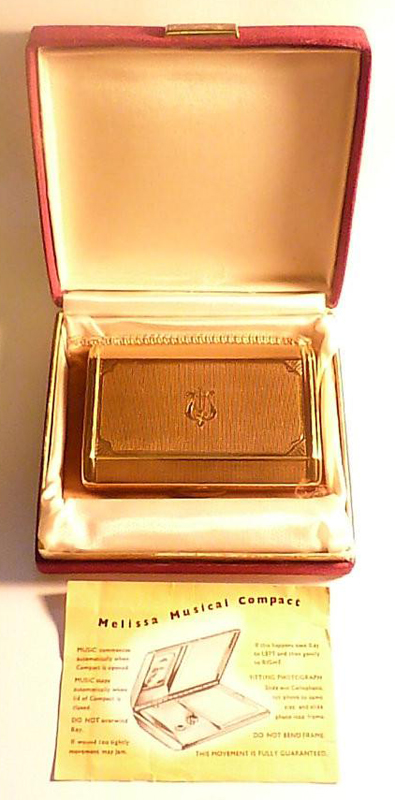
(images from thefashionstudio.com and thevintagecompactshop.com)
I couldn't find much on the ones above, but I'm guessing they're from about the same time as this Elgin musical compact. Elgin introduced a collection of musical compacts in late 1952, and 2 years later the "Ring Bearer" compact joined the lineup. There were a number of different designs, including a couple with musical instruments, but the Ring Bearer was the only one that had a lyre as far as I know.
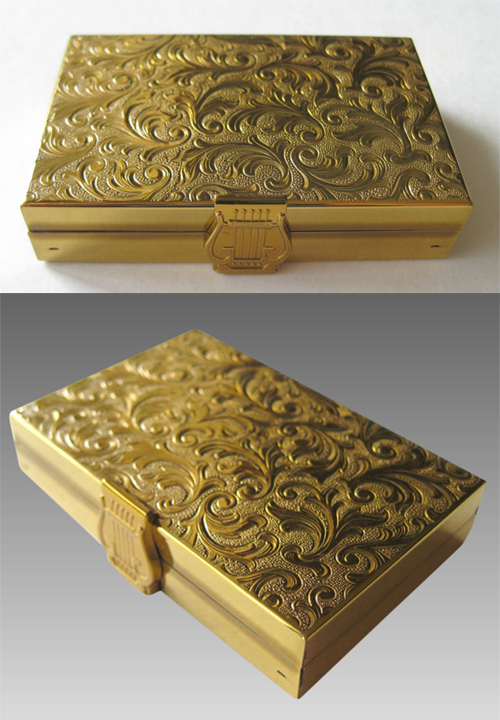
(images from rubylane)
Boy, they really put on the marriage pressure, right? I mean, you could use that extra compartment for any number of items besides an engagement ring…but I guess then they couldn't call it the "Ring Bearer". The ad copy is notable for being a reminder of what it was like back then for women – apparently your happiest moment was supposed to be when your man proposed, rather than, say, getting your Ph.D. Don't get me wrong, being engaged is a very happy time, but it's pretty insulting to say that it's THE happiest. Women have life goals other than marriage that may make them just as happy. Sheesh.
Getting back to the LM Ladurée highlighter, I think it was well-crafted with lots of meticulous details. I can't be sure whether the brand was really inspired by French Empire style or if they simply grabbed some clip art, but I do think them posting a photo of chairs with a nearly identical lyre motif as the one used for the highlighter wasn't accidental – it is quite possible LM Ladurée is in fact drawing on historical resources. In any case, it's simply a beautiful piece both inside and out.
What do you think?


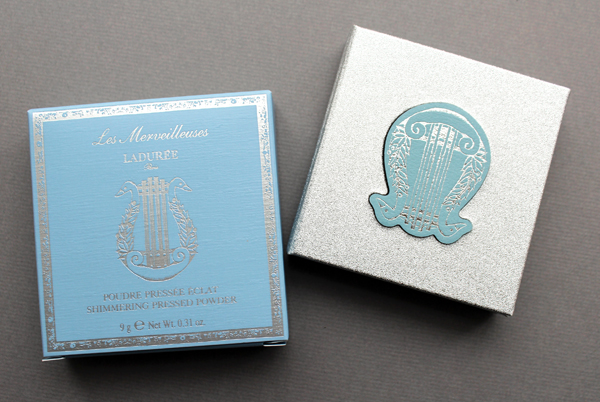
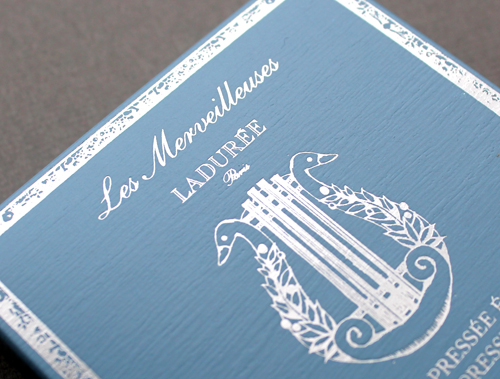
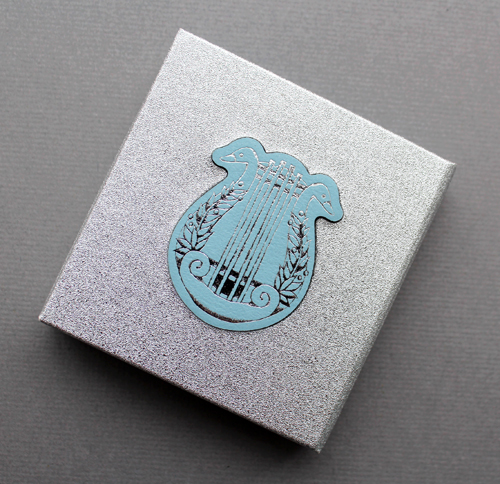

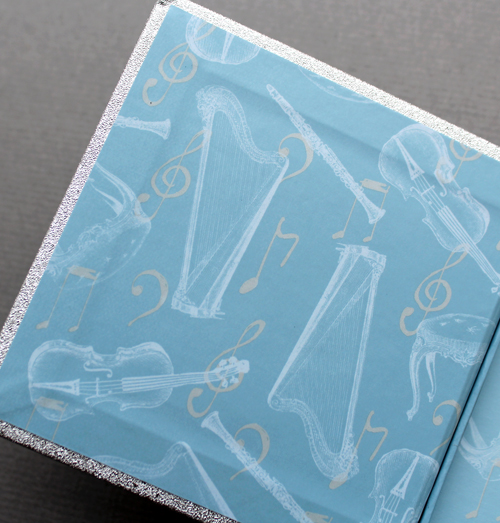
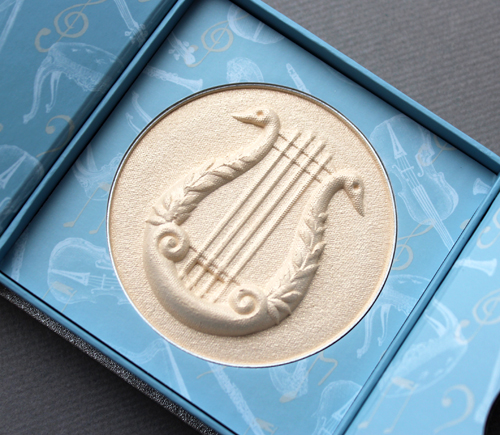
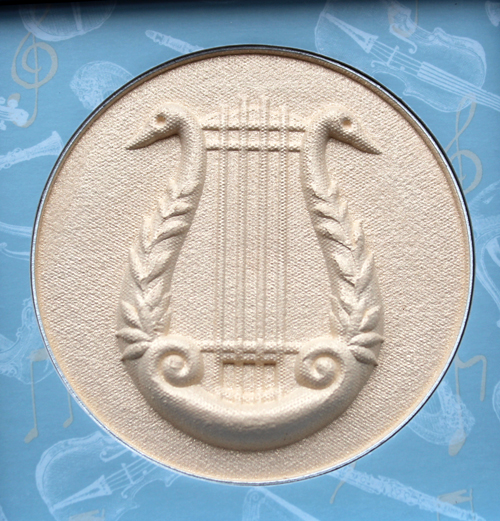
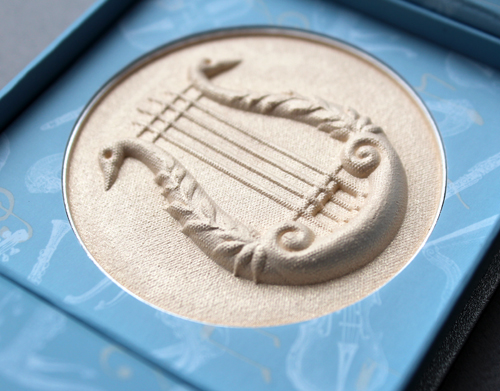
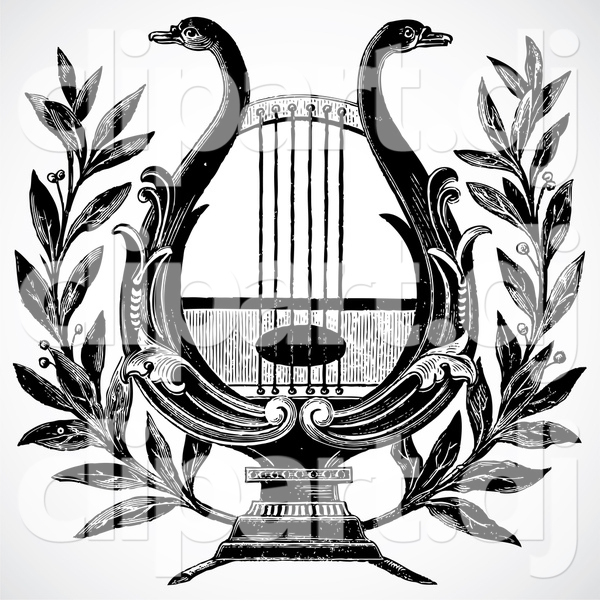
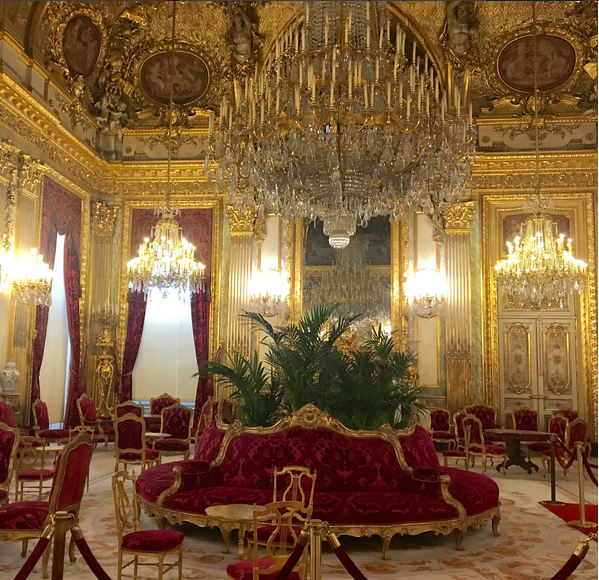
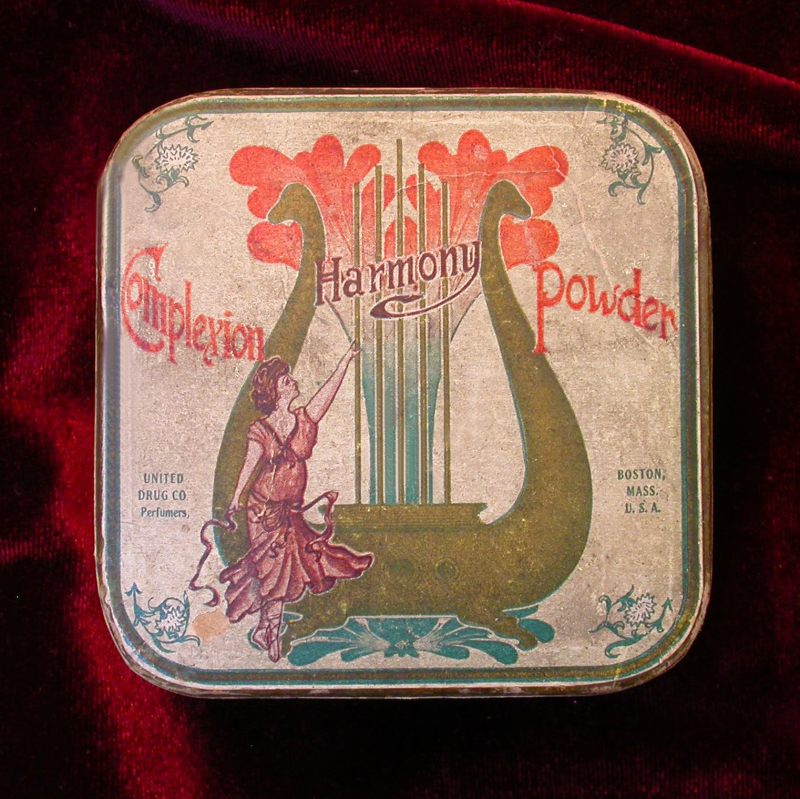
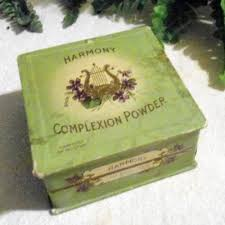

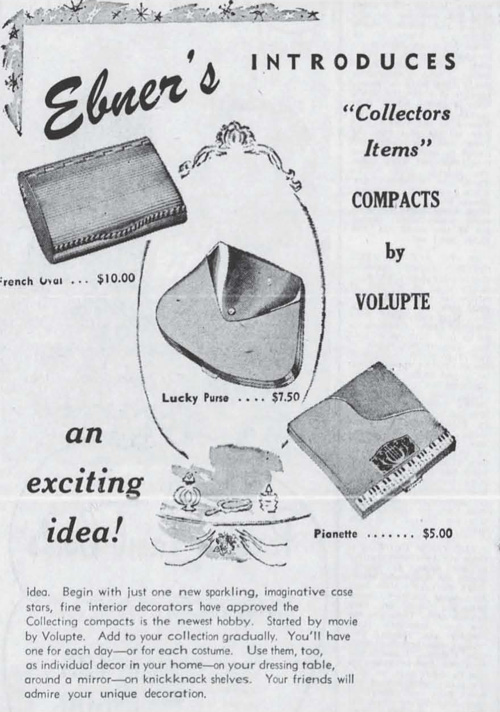
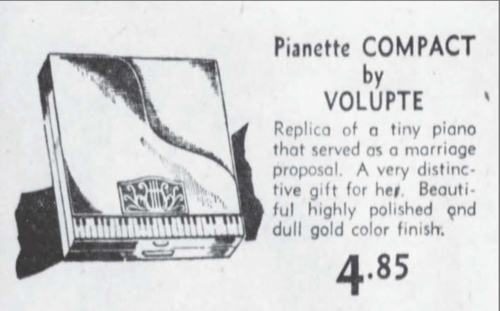
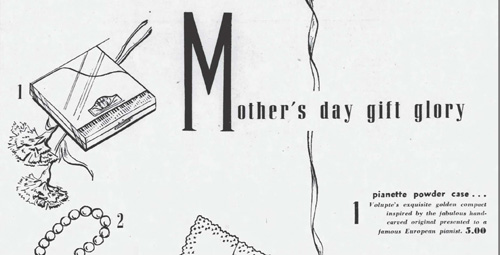
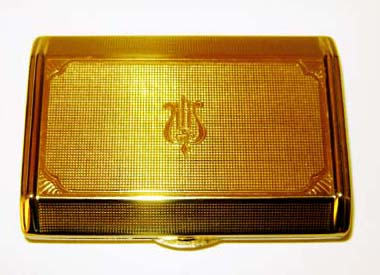
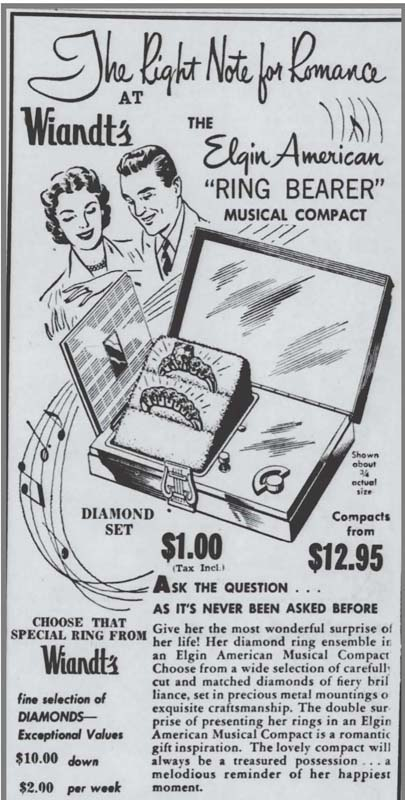
Amazing discovery!!
Amazing discovery!!